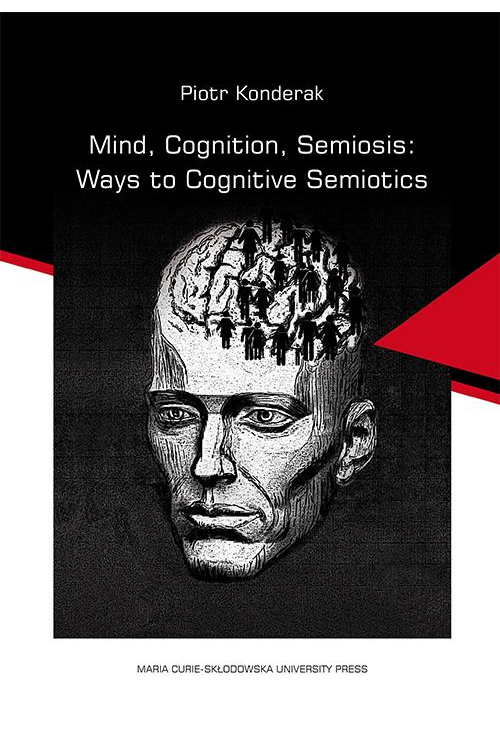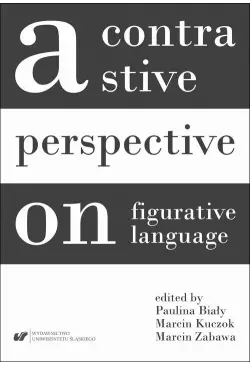
- -11%
ebook Mind, Cognition, Semiosis: Ways to Cognitive Semiotics
Odkryj świat znaczeniotwórczych procesów w kognitywistyce dzięki fascynującemu ebookowi "Mind, Cognition, Semiosis: Ways to Cognitive Semiotics" autorstwa Piotra Konderaka. Ta przełomowa publikacja wydana przez UMCS w 2018 roku zabierze Cię w podróż przez transdyscyplinarne podejście do znaczenia i jego tworzenia. Przygotuj się na niezwykłą lekturę, która łączy filozofię umysłu, semiotykę, lingwistykę, nauki kognitywne, neuroantropologię, psychologię rozwojową i ewolucyjną oraz robotykę.
Czy jesteś gotów na głębokie zanurzenie w tematyce, która dotyczy nie tylko ludzi, ale także zwierząt i systemów sztucznych? Poznaj odpowiedzi na pytania, jak dzieci tworzą znaczenia, jaka jest rola świadomości w tym procesie oraz czy istoty tak różnorodne jak małpy, psy czy papugi mogą być zdolne do tworzenia znaczeń. Zdobądź wiedzę o dwóch ścieżkach kognitywnej semiotyki: fenomenologiczno-enaktywnej i funkcjonalno-kognitywistycznej.
"Mind, Cognition, Semiosis: Ways to Cognitive Semiotics" to wydanie elektroniczne dostępne w sklepie z ebookami. Niezależnie od tego, czy jesteś miłośnikiem literatury pięknej, bestsellerów ebookowych, czy też najlepszych publikacji cyfrowych, ten ebook do pobrania w formacie PDF spełni Twoje oczekiwania. Kup e-booka i rozpocznij fascynującą podróż przez świat znaczeń!
Spis treści ebooka Mind, Cognition, Semiosis: Ways to Cognitive Semiotics
Introduction: How to Approach Meaning? 9Acknowledgements 17
Part I. Cognitive Semiotics: The Basics 19
Chapter 1. Introducing Cognitive Semiotics 21
1.1 The beginnings 21
1.2 Extension of the term “semiotics” 24
1.3 Methodology of cognitive semiotics 26
1.4 Transdisciplinarity 29
1.5 Phenomenological contributions 30
1.6 “Third stage” of cognitive science 31
1.7 Key research interests 32
1.7.1 Metatheoretical considerations 32
1.7.2 Semiotic development and evolution 33
1.7.3 Multimodality and gestures 37
1.8 Cognitive semiotics and cognitivism 38
Chapter 2. The Semiotic Hierarchy Framework 41
2.1 Meaning theory – initial remarks 41
2.2 The Semiotic Hierarchy as a theory of meaning 43
2.2.1 Level 1: Life 43
2.2.2 Level 2: Consciousness 45
2.2.3 Between life and consciousness: the first transition 46
2.2.4 Level 3: Signs 48
2.2.5 Between consciousness and signs: the second transition 49
2.2.6 Level 4: Language 50
2.2.7 From signs to language: the third transition 52
2.3 The Semiotic Hierarchy: some objections 54
Part II. Minds and Meanings 61
Chapter 3. “Analytic” Philosophy of Mind 63
3.1 The Cartesian heritage 63
3.2 Meaningful behavior 66
3.2.1 Behaviorism and cognitive semiotics: mind, body, behavior 70
3.2.2 Problem of other minds 70
3.2.3 First-person knowledge 71
3.3 Reduction to the neural: meaning in the brain 72
3.3.1 Phenomenological fallacy and other problems 73
3.4 Meaning and function 75
3.4.1 On the way to functionalism: causal profiles 75
3.4.2 Mind and function 76
3.4.3 Qualia 79
3.4.4 The representational theory of mind 80
3.4.5 Functionalism extended 82
3.4.6 Functionalism and cognitive semiotics 84
3.4.7 Extended mind and meaning-making 86
3.5 Consciousness, functionally understood 87
3.6 The subjective mind 90
Chapter 4. The Phenomenological Mind and Meaning-Making 93
4.1 How should phenomenology be approached? 93
4.2 Intentionality 95
4.2.1 Perception 97
4.2.2 Remembering 101
4.2.3 Imagination and anticipation 103
4.2.4 Signitive intentions 103
4.2.5 Pictorial intention 105
4.2.6 Indicational intentions 106
4.2.7 Categorial intentions 107
4.2.8 Types of intentionality and the Semiotic Hierarchy 109
4.3 So where are meanings? 109
4.4 The phenomenological method 111
4.5 Lifeworld 115
4.6 Intersubjectivity 116
4.7 Embodiment 119
4.8 A way to science 120
4.9 Phenomenology applied 122
4.9.1 Neurophenomenology 122
4.9.2 Front-loading phenomenology 124
4.9.3 A note on heterophenomenology 126
4.10 Summary: taking phenomenology seriously 127
Part III. Cognition 133
Chapter 5. Cognitivist Approach to Cognition 135
5.1 “Cognitivism” or standard cognitive science 135
5.2 Symbolic approach: the three basic ideas 136
5.2.1 Limitations: magical number 7 137
5.2.2 The generative approach to language 138
5.2.3 TOTE: organization of behavior and behind behavior 140
5.2.4 Cognitivism in a nutshell: perception 141
5.3 Connectionist approaches 143
5.3.1 Overview of the architecture 144
5.3.2 Connectionist representations 145
5.3.3 Manipulations on representations 147
5.4 Representations revisited 148
5.5 What cognitive science is supposed not to be 149
5.6 Standard cognitive science and meaning-making 151
5.7 Cognitivism – summary 153
5.8 Departure from cognitivism: dynamical systems 154
5.8.1 Dynamical systems – applications 156
Chapter 6. Beyond Cognitivism? 159
6.1 Problems with cognitivism 159
6.2 The enactive approach: cognition as interaction 160
6.2.1 Meaning-making in perception I: Gibson’s ecological psychology 163
6.2.2 Meaning-making in perception II: “skillful bodily activity” 167
6.2.3 Experiences 169
6.2.4 Foundations of meaning: autonomy and sense-making 170
6.2.5 Consciousness and phenomenology 172
6.2.6 Radical enactivism: Hutto and Myin 173
6.2.7 Enactivism in cognitive semiotics 175
6.3 Embodied cognition 175
6.3.1 The two approaches to embodiment 178
6.3.2 Embodiment in practice 179
6.3.3 How to overcome the limitations? 181
6.3.4 Six faces of embodiment 183
6.3.5 Summarizing embodiment 184
6.4 Extended cognition 185
6.4.1 Constitution and the cognitive 186
6.4.2 What is a cognitive system? 187
6.5 The embedded mind: a short note 190
6.6 4e+a (or rather 2e+a) 191
6.7 Representations 196
6.7.1 Representations and cognitive semiotics 199
6.8 Summary: cognitive science, cognitive sciences 200
Part IV. Semiosis 207
Chapter 7. Towards a Semiotics for Cognitive Semiotics 209
7.1 Semiotics, sign, semiosis 209
7.2 What is a sign: The Stoics 210
7.2.1 Kinds of signs 210
7.2.2 Sign, proposition and conditional 211
7.2.3 Signs and language 212
7.2.4 “Reading the world”: semeia and cognitive semiotics 213
7.3 Peircean semiotics 214
7.3.1 Signs and cognition 215
7.3.2 Sign, the definition(s) 217
7.3.3 Peircean semiosis as meaning-making 221
7.3.4 The second trichotomy 222
7.3.5 Meanings beyond signs 225
7.3.6 Peircean cognitive semiotics 226
7.4 Semiotics for cognitive semiotics: Sonesson 227
7.4.1 Perceptual meaning 227
7.4.2 Sonesson’s notion of a sign 228
7.4.3 Phenomenology and semiotics 231
7.5 Semiotics and empirical studies 234
7.5.1 Emergence of sign function empirically addressed 235
7.5.2 Semiotics for cognitive semiotics: applications 237
7.5.2.1 Study I: understanding iconicity 238
7.5.2.2 Study II: the role of semiotic vehicles in communication 239
7.6 In sum: the conceptual-empirical spiral 241
Chapter 8. Cognitivism: Modeling Semiosis 243
8.1 Back to cognitivism: a method 243
8.1.1 Cognitive architectures 244
8.1.2 Cognitive modeling: an example application 246
8.1.3 Cognitive (computational) modeling 248
8.2 Cognitive modeling of semiosis 250
8.2.1 What is modeled: semiotic systems 251
8.2.2 Approaches to semiosis 253
8.2.3 Cognitive architecture for semiosis: GLAiR & snarpy 255
8.2.4 Semiosis implemented 257
8.2.5 Further observations 266
8.2.6 Re-interpretation 271
8.2.7 Using a sign as a sign 273
8.3 Summary: cognitive modeling of meaning-making 275
Concluding Remarks: Ways to Cognitive Semiotics Reconsidered 277
Common starting point 277
Complications on the road 279
The forking of paths 281
On the cognitivist path 281
Back on the common road? 283
What’s on the horizon 283
Cognitivism on the horizon 285
The last signpost on the road 286
References 287
Index of Names 309
Index of Subjects 313
Szczegóły ebooka Mind, Cognition, Semiosis: Ways to Cognitive Semiotics
- Wydawca:
- UMCS
- Rok wydania:
- 2018
- Typ publikacji:
- Ebook
- Język:
- polski
- Format:
- Liczba stron:
- 320
- Miejsce wydania:
- Lublin
- ISBN dla wersji papierowej:
- 9788322790854
Recenzje ebooka Mind, Cognition, Semiosis: Ways to Cognitive Semiotics
-
Reviews (0)

Na jakich urządzeniach mogę czytać ebooki?
- -11%












@CUSTOMER_NAME@
@COMMENT_TITLE@
@COMMENT_COMMENT@